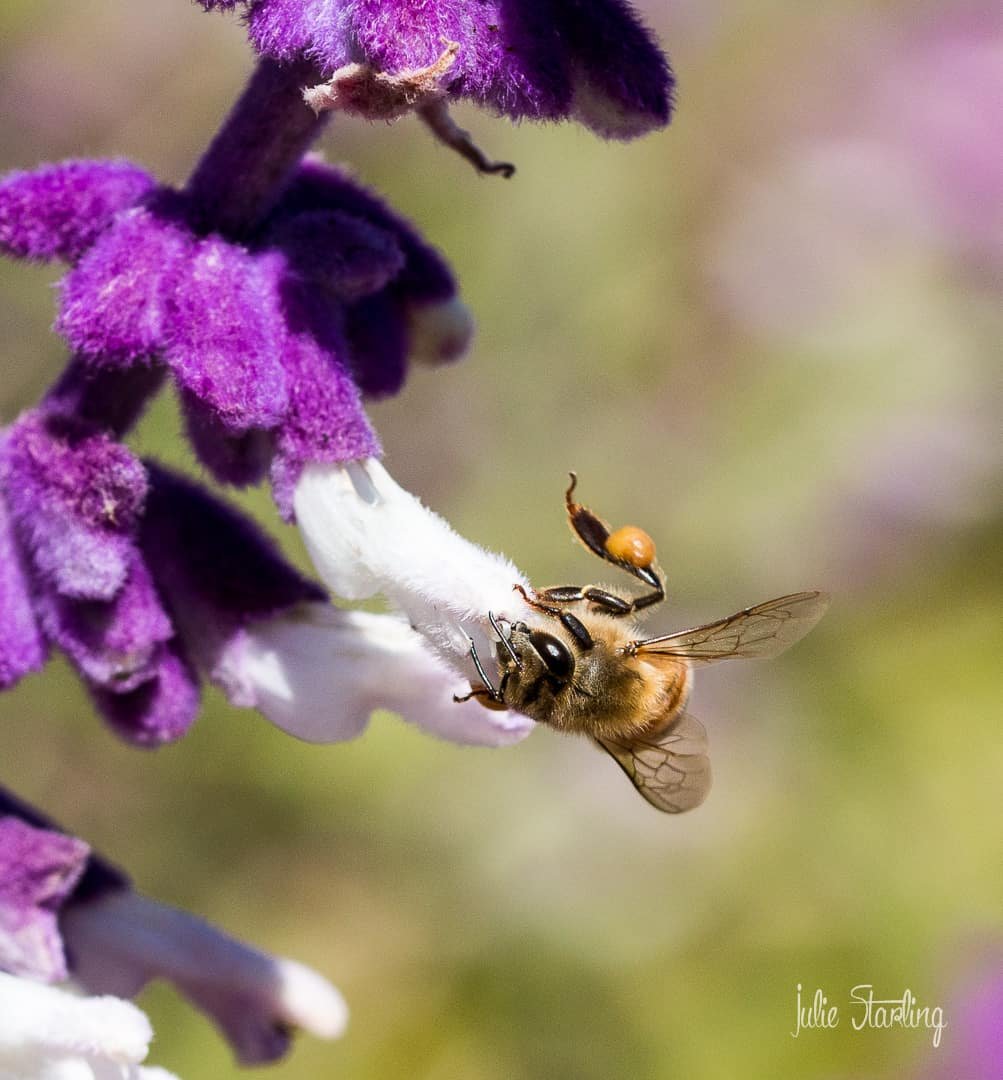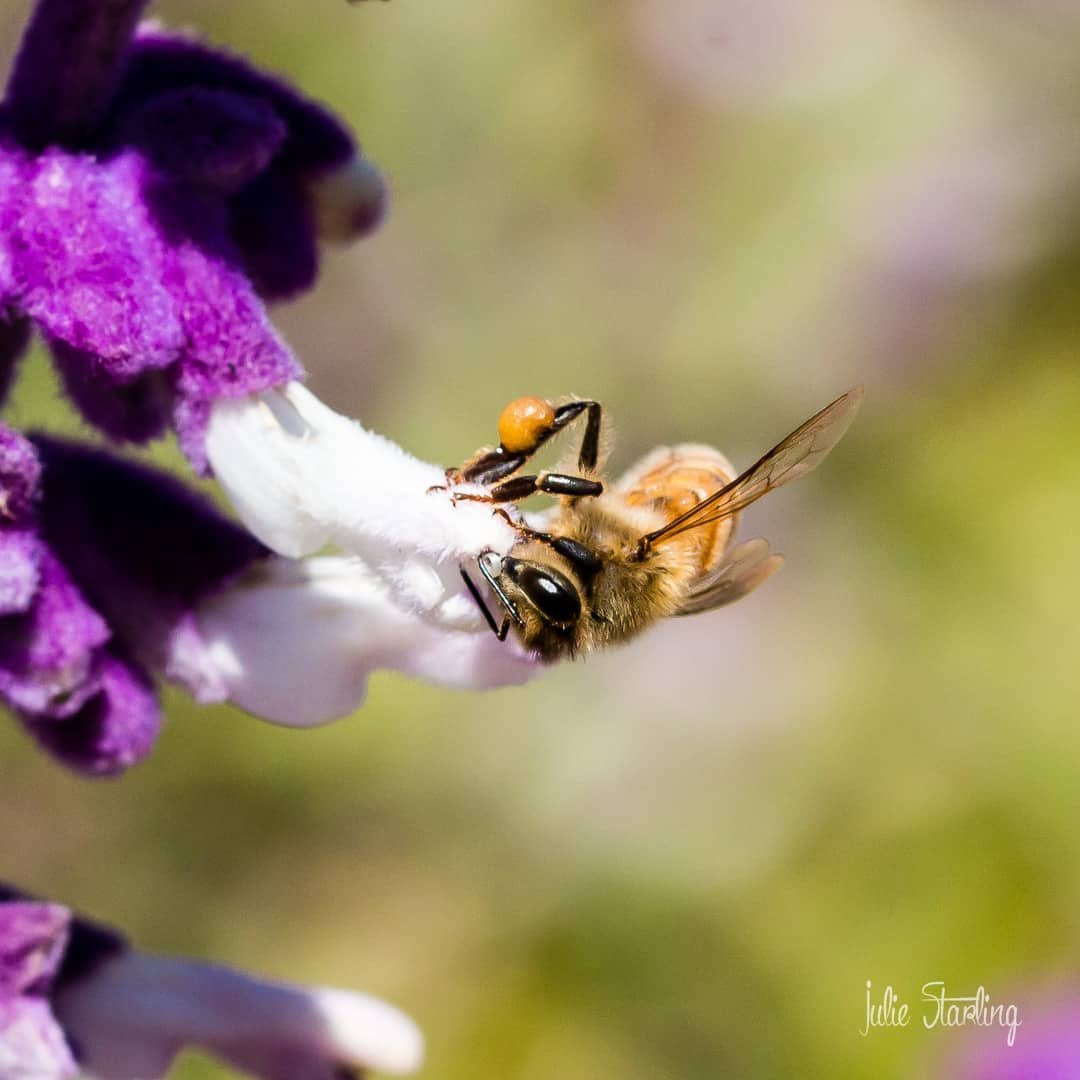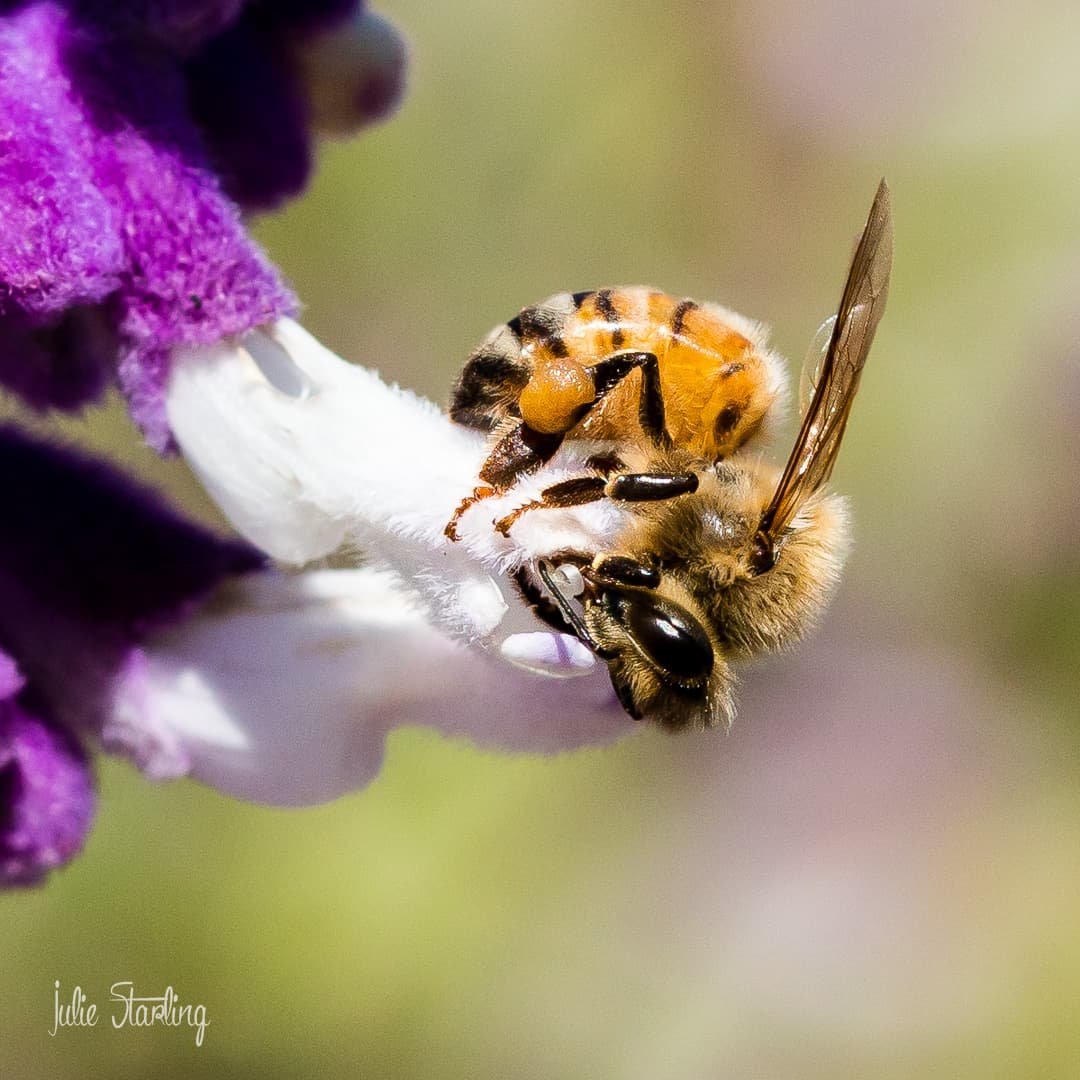268/365
Woah! That's a heavy load this little lady is carrying in her basket! Bees can carry over 1 million grains of pollen weighing up to .01 grams in each pollen basket (half her body weight in total) located on the tibia of their rear legs.
269/365
The pollen basket, or corbiculae, is located on the tibia of the honey bee's hind legs. It's a polished cavity surrounded by a fringe of hairs. The honey bee collects pollen all over her body as she flies from flower to flower. She moistens her forelegs with nectar and brushes pollen from her head, body and forelegs to the lower hind legs where it is combed, pressed and compacted then transfered to the outside surface of the tibia or pollen basket. Each new batch of pollen is pressed onto the bottom of the basket, pushing the previous batches further up. When the basket is full, it will bulge. The hairs that surround the tibia hold the pollen in place.
It takes the honey bee from 18 - 50 minutes to pack one full pollen basket. She will make upwards of 50 trips to the hive daily. The bee pollen ball is brought back to the hive and made into bee bread, which is the pollen with added honey. Bee bread is stored in the brood cells of the hive and when it is completed, the female lays an egg on top of the pollen ball and seals the brood cell.
270/365
Bee pollen is the male seed of a flower blossom. One pollen granule contains from 100,000 to 5 million pollen spores each capable of reproducing its entire species.
Bee pollen should not be confused with allergy causing pollens blown in the wind. Bees are discriminate and only collect pollen rich in nutrients and nitrogenous materials (entomophile pollen) which is heavier and sticker pollen than anemophile pollen (light, easily blown pollen causing allergies in humans).
Bee pollen contains most of the known nutrients and all of those necessary for human survival. It is the primary source of protein for the hive. No two samples of bee pollen from the same hive is exactly identical. On the average it contains 25% protein and all 22 amino acids in every single species. Yet the amino acids vary in amounts between the species. Bee pollen also contains sugars, including fructose and glucose, and a rich source of vitamins and minerals in perfect proportion.



Fascinating! And such great photos.
Whoa, these are amazing!